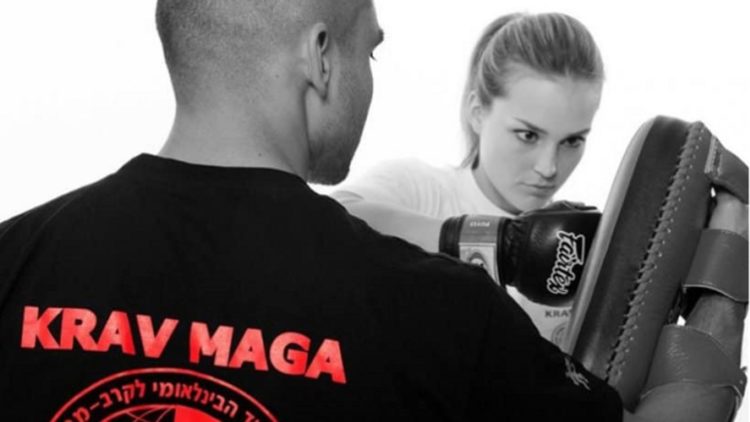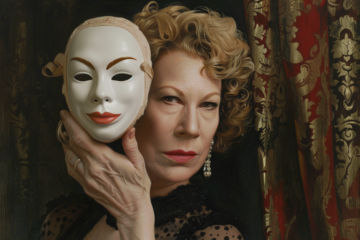The Non-Jewish Origins of Krav Maga
by Karl Radl
KRAV MAGA is in my estimation one of the foundation myths of Israel, as Roger Garaudy famously put it. It forms a key part of Israel’s Hasbara efforts by leveraging its status as a supposedly ‘deadly’ martial art and then introducing pro-Israel talking points and creating sympathy for the Jewish state.
The interesting thing about Krav Maga is its rather… shall we say… dubious ‘Jewish origins’ story.
The British Krav Maga Association summary of this is useful to quote in order to understand this:
Krav maga is a hybrid military self-defence system from Israel. The system of Krav Maga was founded by Imi Lichtenfeld and was based upon Imi’s own street fighting experiences in 1930’s Bratislava (part of modern Slovakia). Imi acquired a good deal of street fighting experience whilst attempting to defend the Jewish quarter of Bratislava from fascist groups.
The unprecedented level of violence experienced by the Jewish population at this time is hard for us to comprehend today. Shootings, clubbing and stabbing of the Jewish populace were common place and unpunished. For some these acts were considered patriotic and celebrated.
After a number of serious run in’s with local fascist groups, Imi became of interest to the authorities and recognised that his chances of survival were getting slim. Imi fled Nazi-occupied [actually, allied with, not occupied — Ed.] Czechoslovakia and arrived in Israel in 1942 where he joined the Czech legion of the British Army fighting Nazi’s. Later, before Israel’s independence from Britain, he began teaching close-quarters combat to Israel’s first fighting units the Haganah. (1)
The Brazilian Krav Maga Association’s website explains this story in greater detail:
Born in 26 of May of 1910 in Budapest, which was located at the center of Austro-Hungarian Empire, Imi was raised in Bratislava, the capital city of Slovakia.
His family education was based in sports, law and medicine. His father, Samuel, was the chief of the local secret service and was known as the agent who caught the most criminals. Besides this, he was also an instructor for grappling techniques in the secret police.
With his father s incentive, Imi practiced many different sports. Between 1928 and 1929, he won many European wrestling championships and in that year he became a boxing champion.
In the following decade, Imi focused his training as a wrestling athlete and instructor, winning many medals in national and international competitions. Ever since the mid-thirties, life in Bratislava was not the same anymore. Fascist groups slowly won political ground, therefore, changing the life in that country. Imi then became the leader of a resistance group that fought the Fascists groups. Between the years of 1936 and 1940, he participated in countless missions and violent confrontations, being alone or in a team. Imi and his colleagues fought hundreds, thousands of enemies in a cruel and unfair war. All of these events and personal experiences resulted in the strengthening of his body and spirit, preparing him for the events yet to come, and planting the seeds that germinated, resulting in the creation of Krav Maga.
In 1940, Imi left his homeland, his family and friends and boarded the last ship that managed to flee from the Nazis. It was nothing more than a simple raft, called “Pentcho”, which was adapted to transport hundreds of people who left Europe with Israel as their final destination. The stories of this raft and its passengers became famous, and were described in the book “The Odyssey”, written by John Birman.
The “Odyssey” of Imi lasted 2 years, during which, in many occasions, he jumped in the water to save the lives of passengers or a valuable bag of food in the frozen Danube River. These “adventures” gave him a strong ear infection that almost led him to death. After an explosion at the gas tank of the ship, which happened near the coast of the Greek Islands, his help was requested. After four days and nights of great effort, Imi was taken in a terrible health condition to Alexandria, where he underwent many surgeries.
Recovered, he joined the Czech Army that fought together with the British Army. And it was in this way that he fought in the middle-east, in combats in Libya, Syria, Lebanon and Egypt. In the year of 1942, he then retired from the army and received a license to live in Israel, where a new phase of his life would begin.
His arrival in the State of Israel meant for Imi only one more step in his path. But without him noticing, this “small” step would be a landmark that would influence and guide the story of the Jews in the State of Israel. Already at this time, in mid-1942, there were defense movements, based in three groups: Haganah, Hetzel and Lehi. They fought to assure the survival of the people in that region, mostly against the “Fedanin” attacks, which were gangs of Muslim criminals who pillaged, kidnapped and killed with cruelty, not for need, but just for fun. In the Haganah defense group, which was the largest organization among the three, Imi met some of his old colleagues and pupils from the Austro-Hungarian Empire. They readily introduced Imi to the Haganah chief, Yitzhak Sadeh, who immediately appointed Imi as the one responsible for physical conditioning
Imi privately taught the elite groups of Haganah and Palmah, and among these the “P.A.L.I.A.M.”. This last one, years later, became the base for the creation of the elite groups of Israeli Armed Forces. With the creation of the State of Israel, Imi joined the “Tzahal” and became the head instructor of physical conditioning and Krav Maga. This work began only in the army, and later spread to the school of physical conditioning of all the Armed Forces. During the following 20 years, Imi improved his special technique of self-defense and face-to-face combat. (2)
Notice that there is a significant gap in the narrative between 1940 and 1942 — when Imi Lichtenfeld was allegedly making his way down the Danube in raft to Greece and then somehow got to Palestine by the middle of 1942. Only for Yitzhak Sadeh — a former sergeant in the Russian army — to appoint Imi as the head of Physical Conditioning of the Haganah and we are then told that Imi taught ‘elite groups’ of the Haganach and Palmach something and it is implied — although not explicitly stated — that this was Krav Maga, which they then used in combat.
The key here is: what is the something that Imi was teaching them?
Was it Krav Maga as these two sources seek to imply?
This is unlikely precisely because while Imi had experience in wrestling, boxing and little bit of street fighting by 1940. It is freely admitted by the source material that the reality of combat and fighting was simply out of his league between the supposed formative years of Krav Maga in 1936-1940. This also nicely rules out Imi’s secret policeman father as the source for Imi’s knowledge of martial arts and actual combat.
The truth is hinted at by Isabel Kershner in the New York Times when she bows to Krav Maga’s origins myth by writing that:
Imi Lichtenfeld was born in 1910 in Hungary and reached adulthood in Bratislava, in what was then Czechoslovakia. The son of a police detective who also ran a wrestling club, Mr. Lichtenfeld excelled in various athletic disciplines and is said to have developed his street fighting and mixed martial arts skills to protect his community from attacks by anti-Semites and marauding fascists. (3)
Yet then goes on to explain that:
Mr. Lichtenfeld set off for the British Mandate of Palestine in 1940, and he began training the Zionist forces in skills like stick fighting and bayonet tactics.
After the state of Israel was established in 1948, he became the Israeli military’s close-quarters combat chief. The system has since evolved into a vital component of Israeli combat training. Elite forces endure many hours of intense coaching. There is no competitive Krav Maga circuit, because the idea is to break all the rules, not play by them, although the army did institute an annual Krav Maga contest a few years ago. (4)
So where had Imi learned ‘bayonet tactics’, as this requires standard infantry training?
Maybe the British-trained Free Czech Legion that Imi joined in North Africa in 1942?
When we further note Kershner words that Krav Maga is about ‘breaking all the rules’ then it is obvious enough that the source of Krav Maga is the British fighting system Defendu aka ‘All-in Fighting’ that was first systemised by a British police officer (and later Lt. Colonel training the trainers of anti-Axis guerrillas and espionage units) named William Fairbairn in 1926.
Defendu shares both Krav Maga’s defensive focus and was the only system of martial arts at the time that encouraged its students to ‘break all the rules. The fact that Imi’s Krav Maga is so close to Defendu and that we know British troops trained jewish guerrillas to fight with them against the Axis powers suggests that it is the origin of Imi’s sudden knowledge of a martial arts system he called Krav Maga. (5)
It is thus no surprise to discover that modern adherents and teachers of Defendu rather pointedly explain that Krav Maga is just a modified form of Fairbairn’s system.
To quote the ‘Defendo Alliance’:
The Krav Maga founder fled from Bratislava during the German occupation in 1940,to escape to Palestine. South Africa called when the Free Czech Legion team went to the British protectorate, and in 1942 with the State of Israels armed organization, the Haganah was in superannuation. During this time, the British armed forces instructors trained members of the Haganah and the armed struggle began. The British instructor taught Imi Defendo, so it is likely that this knowledge was the basis for the future Krav Maga. Starting from 1944 Imi has also participated in the Haganah, Palmach, Pal-yam soldier- and a number of police trainings. 1948, after the formation of the IDF, the Israel Defense Forces, the British withdrew from the already established Jewish state and we can talk about the territorial divisions of the two systems. (6)
It is difficult not to agree with this analysis of the situation in so far as the traditional origins myth of Krav Maga has Imi create the system ex nihilo and therefore it is a ‘Jewish invention for a Jewish state’ if you will.
This cannot be true, because whatever else Imi may have been, he simply didn’t have the knowledge let alone the combat and street fighting experience necessary to create such a system. But if he was taught an existing system by the British – who we know gave him military training – and then rebranded it as his own ‘Jewish fighting system,’ it would make sense of the rather gaping holes in Krav Maga’s origins myth as well as explain the close similarity between Krav Maga and Fairbairn’s Defendu.
So in essence: Imi Lichtenfeld was trained in Defendu by the British army, rebranded what he was taught his own creation ‘Krav Maga’ and taught it in turn to other Zionist Jews, which in turn led to it being integrated into the early IDF.
References
(1) https://britishkravmagaassociation.co.uk/short-history-krav-maga.html
(2) http://www.kravmaga.com.br/languages/eua/?id=o-criador
(3) https://www.nytimes.com/2017/12/30/world/middleeast/israel-krav-maga.html
(4) Ibid.
(5) Simon Anglim, 2010, Orde Wingate and the British Army 1922-1944, 1st Edition, Routledge: New York, pp. 70-74; 118-119 (6) http://www.britishforcesinpalestine.org/attacks.html ; also http://www.defendo.us/defendo/defendo-and-krav-maga.html
(7) http://www.defendo.us/defendo/defendo-and-krav-maga.html
* * *
Source: The Purity Spiral







No surprise here! Jews are great “cultural appropriators” (to use one of their terms, no doubt).
Their own Bible is full of myths and appropriations from other cultures.
Some of them even tried to claim that Columbus was a Jew.
An astonishing number of Jews end up in acting (pretending) and stage magic (illusions).
That is fine, but it gets beyond serious when they turn their deceiving methods to history, such as the “1619 Project” and the Howard Zinn distortions of history.
Martial arts is an important topic. Our offspring must be fit for the future. The German population is reacting in East Saxony: Martial arts schools are overflowing with young people.
Bratislava is not located in Slovenia but in Slovakia. Also Slovakia (1939-1945) was not occupied but allied with Germany. I can tell you that even with their krav maga they had hard times to defend themselfs against Slovak groups such as Rodobrana.
Thank you for the corrections.
I just got a pdf copy of Mr Fairbanks book thanks to this article.
Thanks for sharing. I’m always learning with National Vanguard.
Who would believe the Jews had the physical courage to create their own martial art?
A small woman I once knew would wield a very big mouth in the face of threats from larger individuals. She developed this skill out of necessity, of course, and was highly effective at it. From time to time, I would kid her that she must have had some Jewish ancestry. I’d say she was physically courageous for deploying her skill in a situation that could turn physical at any moment. Perhaps having a loud voice is a martial art in its own right.